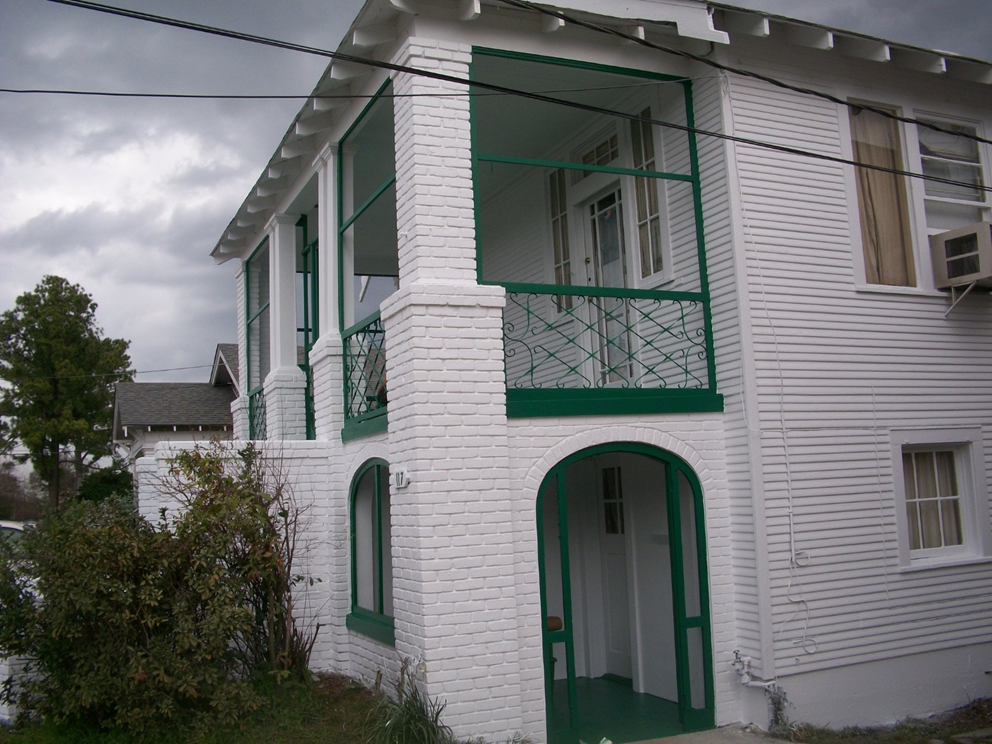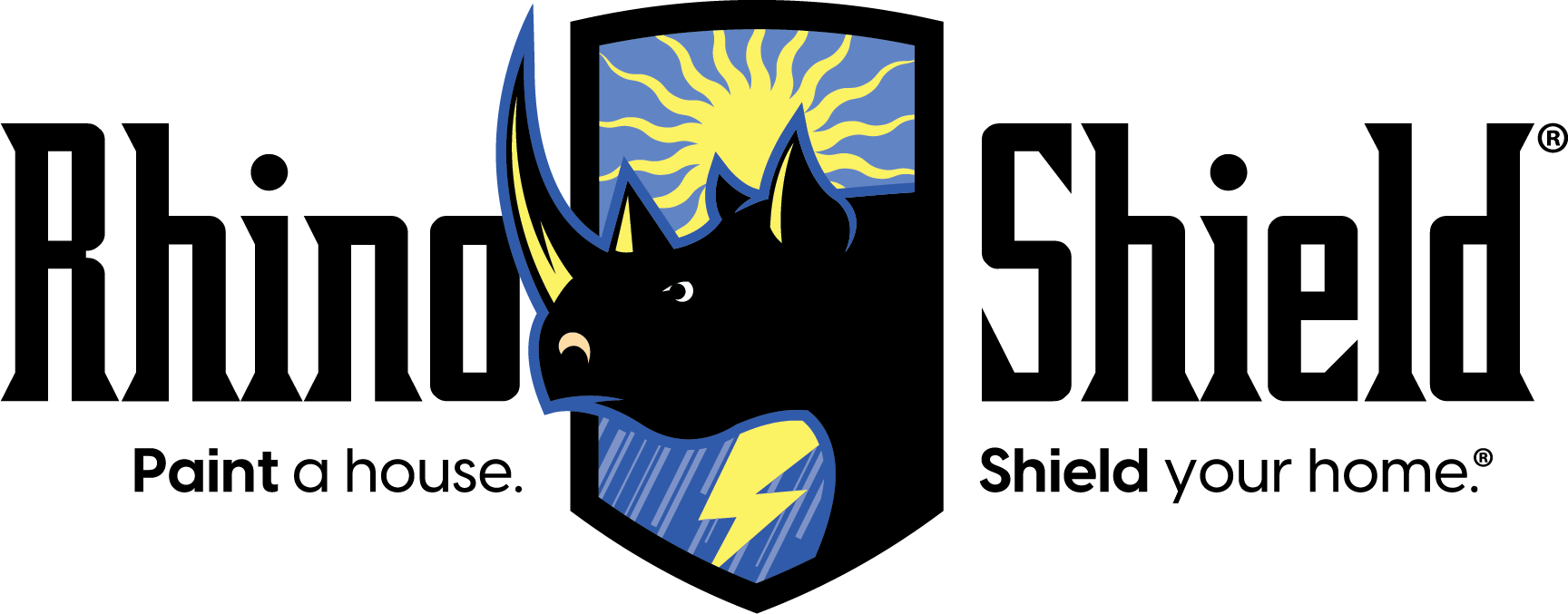Limewashing Brick vs Rhino Shielding Brick: Choosing Between Tradition and Technology
January 22nd, 2024 | 5 min. read
By admin


Image source: 20 Limewash Brick House (with Before and After Photos) - A House in the Hills
When it comes to enhancing the appearance and durability of brick surfaces, homeowners are often faced with the choice between traditional methods and modern technologies. Limewashing, an ancient practice dating back to Roman times, or paint.
Across the nation, our Rhino Shield exterior coating has been used on brick for over 20 years. In fact, Rhino Shield was featured on HGTV’s Curb Appeal the Block, where our paint was put over brick.
Since we repair and paint the exteriors of thousands of brick homes each year, we’re often asked, “How does limewashing compare to paint in aesthetics” and “Does limewashing offer protection similar to Rhino Shield?”
We’ll offer an honest answer to both questions. After all, we know Rhino Shield is a specialized product that’s not for everyone. This piece should help you decide which option to go with based on your preferences and budget.
Limewashing:
Ancient Origins and Composition
Limewashing stands as a testament to the enduring appeal of ancient housekeeping practices. Dating back to Roman times, this technique involves creating a lime putty from crushed and burned limestone, which is then aged, thinned with water, and colored with natural pigments. The result is a mottled and matte surface with a chalky texture, reminiscent of suede.
Limewash has been a popular choice for exterior surfaces, particularly on buildings with historical or traditional architectural styles. It has also found its place indoors, upping the appeal of walls and ceilings with its unique aesthetic.
Color Variability and Opacity
In its base form, limewash is off-white, and while pigments can be added to achieve different colors, the options are a lot more limited compared to modern paints. Limewash tends to produce softer, muted tones due to the use of natural, alkali-resistant pigments.
However, achieving your desired color can be challenging, as limewash becomes much lighter as it dries (up to 10 times darker when wet.) In most instances, this is why people just go with the classic white.
The opacity is contingent on the number of coats applied—typically recommended up to three. Limewash embraces a certain level of unpredictability, as colors vary based on:
- Pigments
- Surface composition
- Porosity
- Application techniques
Limewash is Environmentally Friendly
One of limewash's notable attributes is its ability to allow the underlying surface to breathe, facilitating moisture passage. This makes it suitable for historic buildings and structures with traditional construction methods that require breathability due to their propensity for biogrowth (like mold).
Limewash is also considered environmentally friendly due to its composition of natural materials and low volatile organic compound (VOC) content.
How Much Does it Cost to Limewash?
Maintaining the integrity of limewash requires several layers, and its durability will be compromised over time. Limewashing is less expensive than your typical paint application of $5,000 to $9,000, running anywhere between $3,000 and $6,700 depending on the number of layers and square footage. For both options, you’ll start to notice deterioration after just a few years.
Unlike paint which chips and peels, limewash eventually washes away, and over time, whole sections completely wash off. As a home or business owner, you’ll find yourself reapplying new limewash every 5 to 7 years to sustain your desired look.
Should I DIY Limewash?
Limewash is readily available in cans at most home improvement retailers, making it a convenient option for DIY enthusiasts. However, caution is advised for those new to exterior painting, as errors can easily occur. We recommend a professional application for optimal results.

Image source: 20 Limewash Brick House (with Before and After Photos) - A House in the Hills
Paint:
The look of painted brick has increased in popularity over the last 5 years. People are looking to put a nice color and sheen to restore their brick homes and businesses more than ever.
However, brick requires a thick coating. This is for two reasons:
- Standard paint is thin and will often get absorbed into the brick and cause an uneven look. Thick coats handle the brick’s dimensional characteristic to give it a uniform finish.
- Brick is porous (absorbs water) and needs a coating thick enough to not allow water to penetrate it. When water seeps into brick, it accelerates the deterioration of the mortar.
Rhino Shield has been a popular option for coating brick for over 20 years. Our product has even been specified by the US Army to protect their older brick buildings in Fort Cavazos.
Below are all the ways Rhino Shield can help protect your brick.
Consistent Color and Aesthetic Preservation
Rhino Shield represents a departure from the unpredictability of limewashing, offering you the ability to consistently achieve your desired color. Rhino Shield can come in virtually any color. If you have a specific color in mind, we can even color-match it to fit your exact vision. We also offer sheen options as some customers prefer a little gloss on their brick.
While preserving the natural texture of bricks, Rhino Shield provides the added benefits of protection and vibrant color options. Homeowners who wish to retain the brick’s colors can opt for a Rhino Shield clear coat so that it is protected but still maintains the classic brick look.
Exceptional Breathability and Low VOCs
Since it is porous and absobs water easily, brick requires a breathable coating. Just like limewash, Rhino Shield is highly breathable. This feature ensures that moisture does not become trapped beneath the surface, promoting the longevity of your brick structure. Furthermore, Rhino Shield maintains low VOC levels, aligning with the environmentally friendly characteristics of limewash.
Rhino Shield seals brick better than limewash. Limewash emphasizes aesthetics over protection, while we prioritize both. You want to prevent as much wind-driven rain from penetrating your brick as possible. Water intrusion causes bio growth and ramps up the degradation of the mortar. In our testing conducted by independent labs, we found that Rhino Shield exceeds Federal Wind Driven Rain specifications (DFCs).
Efficiency and Protective Advantages
Compared to limewash's multi-layered approach, Rhino Shield distinguishes itself by requiring only two coats of paint—the primer and topcoat—for full protection.
Our brick primer is specialized for brick’s porous nature. The primer coating seeps into the brick pores, sealing them and bonding with the substrate. This prevents water absorption and slows down mortar degradation drastically.
The Rhino Shield topcoat is not only durable but also eight to ten times thicker than traditional paints. This thickness contributes to its durability against the elements.


Additional Benefits and Longevity
Along with the advantages of our product we’ve discussed above, Rhino Shield offers a range of additional benefits, including:
- Lasts at least 25 years, guaranteed with warranty.
- UV reflectivity – Saves you on A/C energy costs.
- Water repellence – Prevents mold, fungi, and algae growth.
- Insulation benefits
- Grade-A fire retardant
- Abrasion resistance
Mortar protection is another notable advantage. The Rhino Shield adhesive primer penetrates and conditions brick mortar, resulting in a rejuvenated mortar. This helps to delay or mitigate the need for expensive tuckpointing over time.
Long-Term Investment and Warranty
While Rhino Shield applications may come with a higher initial cost than limewashing—between $13,000 and $18,000—the investment pays off over time. Built to last at least 25 years, Rhino Shield is resistant to cracking and chipping due to its elastomeric flexibility. As your brick structure settles, the coating moves with it, preventing damage. Our 25-year warranty further solidifies Rhino Shield as a reliable and long-term solution.
Professional Application and Assurance
Unlike the accessibility of limewash cans, Rhino Shield is only available through the work of our professional installers. The expertise of these painters guarantees that the job is done right, and in the rare event that something does go wrong, Rhino Shield backs up the investment with a 25-year, completely transferrable, and non-prorated warranty.


Conclusion
In the eternal debate between tradition and technology, limewashing and Rhino Shielding emerge as two distinct approaches to beautifying and protecting brick surfaces. Limewash, with its historical charm and environmental friendliness, offers a softer, more unpredictable aesthetic but comes with maintenance challenges and limited color options.
Rhino Shield, on the other hand, represents a modern and efficient solution that ensures consistent color, enhanced protection, and a range of additional benefits, albeit with a higher upfront cost. Unlike limewash, Rhino Shield can:
- Protect the brick and mortar.
- Reduce the wall temperature, leading to lower energy costs.
- Has endless color and design options.
While both options are popular in today’s marketplace, the choice between limewashing and Rhino Shielding hinges on:
- Individual preferences
- Budget considerations
- The desired lifespan of the brick finish.
If you want a cheaper brick coating, are fine with settling for a white color, and don’t mind the idea of re-painting after a few years, limewashing is perfect.
If you want a thick coating that you won’t have to re-paint for a long time, has many unique benefits, comes in any color of your choosing, and includes a 25-year warranty, Rhino Shield is for you.
Scroll down if you are interested in a free, no-obligation quote from us at Rhino Shield.

